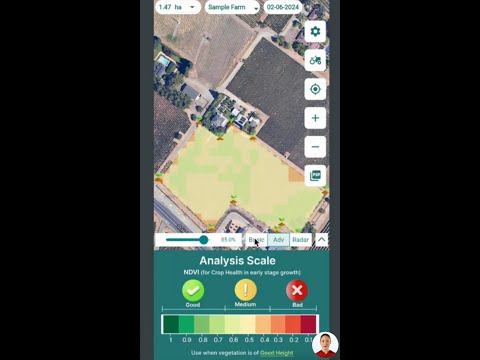Oregon Farm Overtime Law: Impacts on Agricultural Labor Costs and Workforce Challenges
“Oregon’s farm overtime law phases in over 5 years, impacting labor costs and seasonal workforce management.”
In the heart of the Pacific Northwest, Oregon’s agricultural sector is undergoing a significant transformation with the implementation of the new farm overtime law. As we delve into this complex issue, we’ll explore how this legislation is reshaping the landscape for both farmworkers and growers, presenting a mix of opportunities and challenges that will define the future of agriculture in the state.
Understanding the Oregon Farm Overtime Law
The Oregon farm overtime law, passed in 2022, marks a pivotal shift in agricultural labor regulations. This groundbreaking legislation aims to provide farmworkers with overtime pay, a benefit long enjoyed by workers in other industries. As we analyze its implementation and effects, it’s crucial to understand the law’s key components and its gradual rollout.
The Phased Implementation
Oregon’s approach to farm overtime is characterized by a thoughtful, phased implementation over five years. This gradual rollout is designed to give farms time to adapt their operations and financial strategies. Let’s break down the timeline:
- 2023: Overtime threshold set at 55 hours per week
- 2024: Threshold lowered to 48 hours per week
- 2025-2026: Further adjustments (specifics to be determined)
- 2027: Final phase with overtime kicking in at 40 hours per week
This stepped approach reflects the state’s attempt to balance the needs of farmworkers with the economic realities faced by agricultural employers.
Comparative Context: California and Washington
Oregon’s decision to implement farm overtime regulations follows similar moves by its West Coast neighbors. California and Washington have already fully phased in their overtime laws, with both states now requiring overtime pay for farmworkers after 40 hours of work per week. These precedents offer valuable insights into the potential impacts and challenges Oregon may face as it progresses through its own implementation process.

Immediate Impacts on Farmworker Earnings
Recent analysis by Oregon State University agricultural economists has revealed some unexpected outcomes of the overtime law’s initial implementation. While the intention behind the legislation was to improve compensation for farmworkers, the reality has proven more complex.
Higher Hourly Wages, Lower Annual Earnings
Paradoxically, some Oregon farmworkers are finding themselves in a situation where they’re earning higher hourly wages but taking home less money annually. This counterintuitive result stems from farms reducing employee hours to avoid paying overtime. The economists’ study of payroll data from various agricultural operations, including dairies, nurseries, and cherry farms, provides concrete evidence of this trend.
For instance, data from a sample of dairy farm employees showed:
- An average decrease of six hours in weekly work time
- A reduction of approximately $75 in weekly wages
These findings highlight the complex interplay between wage rates, work hours, and overall earnings in the agricultural sector.
Varied Impacts Across Farm Types
The study also revealed that the impact of the overtime law varies significantly across different types of agricultural operations:
- Dairies: Projected labor cost increases of 7% at the 48-hour threshold and 12% at the 40-hour threshold
- Nurseries: Estimated 4% labor cost increase by 2027
- Cherry growers: Expected 3.3% increase this year, rising to 6.3% by 2027
These variations underscore the need for nuanced approaches to managing the overtime regulations across different agricultural subsectors.
Long-term Implications for Oregon’s Agricultural Sector
As we look beyond the immediate effects, it’s clear that the farm overtime law has the potential to reshape Oregon’s agricultural landscape in profound ways.
Potential for Farm Consolidation
One of the most significant long-term concerns is the potential for increased farm consolidation. Smaller farms, facing higher labor costs and reduced flexibility in managing their workforce, may find it increasingly difficult to remain competitive. This could lead to a scenario where larger agricultural operations, better equipped to absorb the additional costs and manage complex labor schedules, become more dominant in the state.
Industry experts, like Mike Doke of the Columbia Gorge Fruit Growers, warn of a future where small, family-owned farms give way to larger corporate entities. This shift could fundamentally alter the character of Oregon’s agricultural communities and the diversity of its farming operations.
Workforce Management Challenges
The overtime law is also forcing farms to rethink their approach to workforce management. Strategies being considered or implemented include:
- Hiring additional workers to spread hours and avoid overtime pay
- Investing in automation and technology to reduce labor needs
- Adjusting crop selections to focus on less labor-intensive options
These adaptations could lead to significant changes in employment patterns and the types of skills required in agricultural work.
The Role of Technology in Adapting to New Labor Regulations
As Oregon’s farms grapple with the challenges posed by the new overtime law, many are turning to technological solutions to optimize their operations and manage labor costs more effectively. This is where platforms like Farmonaut come into play, offering innovative tools for precision agriculture and farm management.
Satellite-Based Crop Monitoring
Farmonaut’s satellite-based crop health monitoring system provides farmers with real-time insights into their fields’ conditions. This technology allows for more precise decision-making regarding irrigation, fertilizer application, and pest management, potentially reducing the need for extensive manual labor.
AI-Driven Advisory Systems
The Jeevn AI advisory system offered by Farmonaut delivers personalized farm management strategies based on real-time data analysis. By leveraging this technology, farmers can optimize their operations, potentially mitigating some of the increased labor costs associated with the overtime law.
Resource Management Tools
Farmonaut’s fleet and resource management tools can help farms streamline their operations, ensuring more efficient use of both human and mechanical resources. This efficiency could be crucial in managing labor hours and costs under the new overtime regulations.
“Recent analysis shows some Oregon farmworkers earn less annually despite higher hourly wages due to reduced work hours.”
Industry Response and Proposed Modifications
As the agricultural sector in Oregon grapples with the implications of the overtime law, industry groups are actively exploring ways to modify the regulations to better suit the unique needs of farming operations.
Proposed Adjustments to Overtime Rules
Several industry associations, including the Columbia Gorge Fruit Growers, Oregon Association of Nurseries, and Oregon Farm Bureau, are considering proposing modifications to the overtime rules. Some of the key suggestions include:
- Capping overtime at 48 hours instead of progressing to 40 hours
- Creating a three-month window with a 55-hour overtime threshold to accommodate harvest seasons
- Developing sector-specific rules that recognize the unique labor needs of different types of farms
These proposals aim to strike a balance between improving working conditions for farmworkers and maintaining the economic viability of agricultural operations, especially for seasonal and specialty crop growers.
Balancing Fair Labor Practices and Economic Sustainability
The ongoing debate surrounding the farm overtime law highlights the complex challenge of balancing fair labor practices with the economic realities of agricultural production. Advocates for farmworkers, such as Reyna Lopez of PCUN (Pineros y Campesinos Unidos del Noroeste), emphasize the importance of equitable pay and improved working conditions. On the other hand, farm owners and industry associations stress the need for flexibility to manage seasonal labor demands and maintain competitiveness in a global market.
As the industry seeks solutions, it’s clear that any modifications to the law will need to carefully consider the interests of all stakeholders to ensure a sustainable future for Oregon’s agricultural sector.

The Role of Data in Shaping Agricultural Policy
As Oregon navigates the implementation of its farm overtime law, the importance of accurate, comprehensive data in shaping effective agricultural policy cannot be overstated. This is where advanced agricultural technology solutions like Farmonaut can play a crucial role.
Leveraging Satellite Data for Policy Insights
Farmonaut’s satellite-based crop monitoring technology provides a wealth of data that could be invaluable for policymakers and researchers. By offering detailed insights into crop health, soil conditions, and land use patterns across the state, this technology can help inform decisions about labor needs, productivity, and the overall impact of regulatory changes on agricultural output.
AI-Driven Analysis for Informed Decision-Making
The AI capabilities of platforms like Farmonaut can assist in analyzing complex datasets, helping to identify trends and patterns that might not be immediately apparent. This could be particularly useful in assessing the long-term effects of the overtime law on different types of farms and agricultural sectors.
The Future of Agricultural Labor in Oregon
As we look to the future of agricultural labor in Oregon, it’s clear that the landscape is set to evolve significantly. The implementation of the farm overtime law is just one factor in a complex equation that includes technological advancements, changing consumer preferences, and global market pressures.
Adapting to a Changing Workforce
The agricultural sector will need to adapt to changing workforce dynamics. This may include:
- Developing new training programs to upskill workers for more technologically advanced roles
- Creating more attractive employment packages to retain skilled workers
- Exploring innovative labor models that balance the needs of farms with the rights of workers
Embracing Technology for Sustainable Growth
As labor costs increase, farms will likely accelerate their adoption of technology to remain competitive. Solutions like Farmonaut can play a crucial role in this transition, offering tools that enhance productivity and efficiency while potentially reducing reliance on manual labor.
For instance, Farmonaut’s precision agriculture tools can help farms optimize their resource use, potentially offsetting some of the increased costs associated with the new labor regulations. The platform’s API also allows for integration with other farm management systems, creating a more comprehensive approach to agricultural operations.
Balancing Economic and Social Objectives
The ongoing implementation of the farm overtime law will require continuous dialogue between policymakers, farmers, and farmworker advocates. Finding the right balance between ensuring fair compensation for agricultural workers and maintaining the economic viability of farms will be crucial for the long-term sustainability of Oregon’s agricultural sector.
Comparative Analysis: Oregon Farm Overtime Law Implementation Timeline and Impacts
| Year | Overtime Threshold (hours/week) | Estimated Average Hourly Wage | Projected Annual Earnings for Farmworkers | Estimated Labor Cost Increase for Farms |
|---|---|---|---|---|
| 2023 | 55 | $15.50 | $33,480 | 3.6% |
| 2024 | 48 | $16.25 | $32,760 | 7% |
| 2025 | 44 | $17.00 | $32,200 | 9% |
| 2026 | 42 | $17.75 | $31,800 | 10.5% |
| 2027 | 40 | $18.50 | $31,560 | 12% |
This table provides a clear overview of the projected changes in overtime thresholds, wages, and costs over the five-year implementation period of Oregon’s farm overtime law. It’s important to note that these figures are estimates based on current data and projections, and actual outcomes may vary depending on various factors including farm size, crop type, and individual farm management strategies.
Conclusion: Navigating the Path Forward
As Oregon’s agricultural sector navigates the implementation of the farm overtime law, it’s clear that the path forward will require innovation, adaptation, and collaboration. The challenges posed by increased labor costs and changing workforce dynamics are significant, but they also present opportunities for modernization and increased efficiency in farming practices.
Technology will undoubtedly play a crucial role in this transition. Platforms like Farmonaut offer powerful tools that can help farms optimize their operations, manage resources more effectively, and potentially mitigate some of the financial impacts of the new regulations. By leveraging advanced satellite imagery, AI-driven insights, and comprehensive farm management solutions, Oregon’s agricultural businesses can position themselves for success in this new regulatory environment.
Ultimately, the success of Oregon’s farm overtime law will depend on finding a balance that protects the rights and well-being of farmworkers while ensuring the continued viability and competitiveness of the state’s agricultural sector. As the implementation progresses, ongoing dialogue, data-driven decision-making, and a willingness to adapt will be essential for all stakeholders in Oregon’s agricultural community.
FAQ Section
Q1: How does Oregon’s farm overtime law compare to similar laws in other states?
A1: Oregon’s farm overtime law is similar to those implemented in California and Washington, with a phased approach to reaching a 40-hour overtime threshold. However, Oregon’s implementation timeline is longer, giving farms more time to adapt.
Q2: Will the overtime law affect all types of farms equally?
A2: No, the impact varies depending on the type of farm. Studies show that dairies may face higher labor cost increases compared to nurseries or fruit farms due to differences in labor intensity and seasonal work patterns.
Q3: How can technology help farms adapt to the new overtime regulations?
A3: Technologies like Farmonaut’s satellite-based crop monitoring and AI-driven advisory systems can help farms optimize their operations, potentially reducing labor needs and managing costs more effectively.
Q4: Are there any proposed modifications to the overtime law?
A4: Yes, industry groups are considering proposing modifications such as capping overtime at 48 hours instead of 40, and creating a three-month window with higher thresholds for harvest seasons.
Q5: How might the overtime law affect farm consolidation in Oregon?
A5: There are concerns that increased labor costs could lead to greater farm consolidation, with smaller farms finding it more challenging to remain competitive under the new regulations.
For more information on how Farmonaut can help your agricultural business adapt to changing regulations and optimize operations, check out our mobile apps:
Stay informed and adapt your farming practices with Farmonaut’s cutting-edge agricultural technology solutions.






